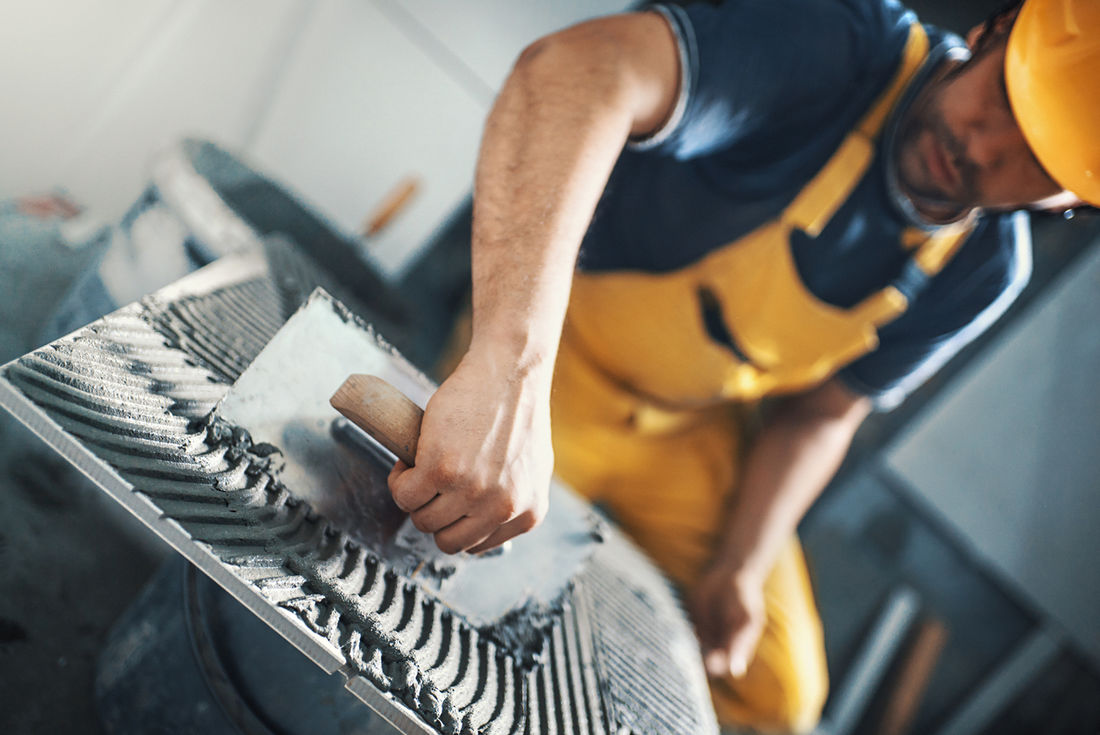Home renovators pretty universally hate grout. It's messy, time-consuming and can make your fingers dry out and peel if you're not careful. Plus, grout can look pretty dingy after a few years, which means you’ll just have to do it all over again.
That’s why a common question from home renovators taking on tiling projects is: “Can I tile my bathroom/ kitchen/ laundry without grout?” The short answer is no. While you technically could tile without grout, there are some compelling reasons why you shouldn’t.
Grout doesn't add to your tiling job's stability in the long run (unless you use an epoxy-style grout) and the usually uniform-looking nature of tiles often means people think they should be able to install them without grout lines (that is, butted up against each other in a continuous line).
However, while tiles look like they're the same size to the naked eye, they're generally not. The manufacturing process almost guarantees no two tiles will be the same.
And that's where tiling without grout gets you in hot water. If you try to align all the tiles against each other, the minuscule differences in the edges will become immediately apparent. There will always be space between them, and that means your tiling job will look more like crazy paving than straight, neat lines. And the bigger the job, the worse it will look.
Adding even a small space for grout between your tiles will iron out these issues, leaving you with a much more satisfactory job. Plus, if you leave out the grout, you risk all sorts of bits and pieces, dust, skin flakes, dirt and other yucky stuff building up in between the tiles – all of which will make your tiled space look, feel and smell unpleasant in next to no time.
Yes, you could commit to cleaning religiously between the tiles, but it would be an unnecessarily tricky job. And you risk damaging the edges of your tiles in the process, exacerbating the problem.
Another reason is that tiles, by their very nature, move. The wood or concrete floor you lie your tiles down on expands and contracts over time, which butting tiles directly against each other will eventually cause more significant damage – whatever material your tiles are made of will rub against its neighbours and cause chipping.
In high-traffic areas (if your tile is on the floor), things can go downhill pretty fast. Grout adds to the project’s durability; leaving it out can mean, after a relatively short amount time, you’ll have to pull up all the tiles and start again – a far worse job than if you grouted in the first place.
If you really, really, really don’t want to grout you could use vitrified tiles. They're made of compressed clay dust and generally straighter than other types of tiles. But, eventually, you'll run into problems – for all the reasons laid out above.
Grout is a bit like glue – it holds everything in place, fills up the voids between tiles for more natural cleaning and makes your surface bond together for a stronger job that‘s more likely to last without chipping or cracking.
So, when people ask whether they could forgo the grout and line up all their tiles neatly, I usually say, "Sure! But – I promise – you'll be so much happier if you just do it the traditional way."

